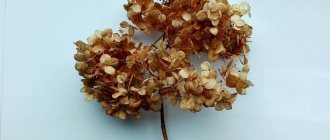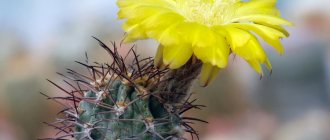The flowering plant Mirabilis is a member of the Nyctaginaceae family. This genus includes more than 50 species. Under natural conditions, they can be found in tropical and temperate regions, and they are most common in South and North America, but there is 1 species, whose homeland is South Asia. From Latin “mirabilis” is translated as “amazing”. This type of mirabilis, like jalapa, is also called the “night beauty”, and it has won great love among gardeners. These flowers are simple at first glance, but they have a mysterious appeal. When Mirabilis blooms, the garden is filled with a unique smell. It is distinguished by its unpretentiousness and undemandingness to growing conditions. Often, such a plant is used to form a not very high hedge, which looks bright and impressive.
Features of Mirabilis (night beauty)
The Mirabilis jalapa species is native to Mexico. This perennial has a tuberous swollen root and is cultivated as an annual plant. The bushes have a rounded-elongated shape, and their height varies from 0.3 to 0.8 m. The densely branched, erect shoots are painted pale red, their lower part becomes lignified over time. Opposite, entire, bare petiolate leaf plates have an ovoid-elongated shape, and they are colored green. The fragrant apical corymbose inflorescences consist of funnel-shaped flowers, reaching 2.5 centimeters in diameter, which can be colored crimson, orange, purple, white, violet, yellow, deep red, and also come in two or three colors. The flowers open after 4 p.m. and close at dawn. If the weather is cloudy, then the mirabilis flowers remain open throughout the day. Flowers of different colors can bloom on the same bush of such a plant. For example, one mirabilis bush can be decorated with flowers of various shades of pink (from crimson to salmon), and it happens that multi-colored stripes adorn the petals. The large single-seeded fruit has sharp ribs and a dark brown color. The seeds remain viable for three years.
Wonderful fragrant mirabilis flower. How to grow from seeds
Seed collection and storage
Collect seeds from Mirabilis throughout the season. By autumn, the seeds are fully ripened and are well separated from the seed cup. For convenient collection, paper or cloth is spread under the bushes. The plant is gently shaken. All ripe seeds will fall off on their own.
Store the seeds in a fabric bag in a dry place. To prevent the seeds from being damaged by pests, they are sprinkled with wood ash.
The plant can be propagated not only by seeds, but also by roots. To do this, in the fall the roots are dug up and placed in sawdust. Keep the roots in a cool place and moisten regularly.
Mirabilis is a popular ornamental plant that has an unusual appearance. The plant does not require care, however, in order to speed up the flowering period, it is recommended to grow mirabilis seedlings from seeds, and only then transplant them to a permanent place of growth.
Growing Mirabilis from Seeds
Sowing seedlings
Mirabilis jalapa species can be propagated by seed. Before you start sowing seeds, you need to scarify them; to do this, you need to injure their dense shell using sandpaper or a file. Pour lukewarm water into a thermos and add the seeds there, they should stay there for 24 hours. Night beauty seeds are sown for seedlings from early to mid-April. To do this, take individual cups, which are filled with a light, slightly alkaline or neutral soil mixture; you can buy it in a specialized store or make it yourself. To do this, you need to combine compost (humus), peat, turf soil and washed sand (1: 2: 2: 0.5), then add wood ash (for 5 liters of mixture ½ cup of ash) or dolomite flour (for 5 l mixture 2 large spoons of flour). Fill the cups with soil mixture to ¾ of the volume, remembering to compact it well. Then it is watered abundantly with a fungicide solution. A pair of seeds are sown in 1 cup, which are covered with a not very thick (from 10 to 15 mm) layer of loose substrate, then the crops need to be watered with a fine spray bottle.
Then the crops are harvested in a greenhouse, the air temperature in which should be from 18 to 20 degrees.
Growing seedlings
The first seedlings can be seen after 5 or 6 days. When the shoots appear, do not forget to remove the shelter and move the cups to a well-lit place. After the seedlings have one true leaf blade, it will be necessary to thin out the seedlings. To do this, in each cup, with scissors, it is necessary to cut off to the surface of the substrate the one of the seedlings that seems to be the weakest, so that it cannot interfere with the growth and development of a stronger plant. At the same time, the seedlings will need to be fed for the first time, using, for example, Fertika, Mortar or Krepysh.
You need to water the seedlings only after the lump of earth in the cup has completely dried, and all because it reacts extremely negatively to waterlogging of the substrate. After the height of the plants reaches 10–15 centimeters, they will need to be transferred to larger pots and fed a second time, using complex mineral fertilizer. After the seedlings have taken root well, they will need to begin to be hardened off. The duration of hardening of plants is half a month, during which time they will have to get used to the external environment. To harden seedlings, they must be transferred to fresh air every day (to the balcony or garden), and the time the seedlings spend outside should be increased little by little, until eventually the plants will be able to stay there for a whole day.
Mirabilis propagation methods
The seed method of propagating this type of plant is often used. To do this, you need to collect dry seeds from an adult night beauty bush after it has finished flowering. Another method of propagation is the cultivation of Mirabilis Jalapa using cuttings and tubers.
Sowing seeds
The favorable time for sowing seeds is early spring. For this, seedling boxes are used, which can be placed in greenhouses or on the windowsills of the house after planting. The room must be maintained at a constant temperature and humidity. To achieve rapid germination of seeds, you can pre-soak them for several hours in a wet piece of cloth. In this case, you can observe the first shoots a couple of weeks after sowing. When planting seedlings in open ground, the depth of the hole should not exceed 2 cm. Transplantation of young plants from a seedling box is carried out only when warm spring weather has established and there are no night frosts.
All sowing work must be carried out taking into account the climatic parameters for a given region. To protect seedlings from death and protect them from unpredictable frosts, you can cover them on top with a special protective material. If you want to grow a hedge from flowers in a flower bed, then thinning is a mandatory maintenance measure. Due to the fact that the plant can reach a large height, thinning makes it possible to get a tall, slender, beautiful wall of fresh flowers.
Propagation by tubers
A common planting method is to propagate mirabilis using tubers, which are easy to find at any garden store or fairs. Another option is to use tubers from your own seedlings grown on your own site. They are carefully dug out and placed in sawdust or sand, where they are stored at a temperature not lower than +5 degrees. Spring transplantation of tubers into open ground can only be done if they are fully germinated.
This method of flower propagation is not widely used among gardeners, since it is believed that such planting material in the form of tubers can dry out during storage. In this situation, the tubers will no longer be suitable for planting for propagation in the spring.
Propagation by cuttings
Occasionally, the method of propagating a flower using cuttings is used, since planting and isolating vegetative parts from a plant is a rather labor-intensive and not always effective process.
Semi-lignified shoots are used for these purposes. They are cut, and the cut areas are thoroughly dried. The shoots are dipped into a special solution, which accelerates the growth process, and then planted in prepared seedling containers. After a couple of weeks, their root system will get stronger, and the young shoots will fully take root. Seedlings must be constantly watered and kept at room temperature. If conditions do not allow this, then containers with shoots must be heated from below. Grown and strengthened cuttings are planted in warm spring weather in a prepared area of the flowerbed.
Sowing mirabilis seeds in open ground
Night beauty seeds can be sown directly into open soil. You need to prepare seeds for sowing in the same way as when sowing seedlings. They are planted in the last days of April or the first days of May. Place the seeds in the prepared grooves, keeping a distance of 7 to 8 centimeters between them. The seeds need to be buried into the soil only 30 mm. Crops need to be watered with lukewarm water, after which the area is covered with film or non-woven material. When the first seedlings appear, the cover will need to be removed. When the flowers grow, they will need to be thinned out.
Preparing for sowing
The seeds of the Night Beauty are large and have good germination. They are black or cinnamon in color. A special feature of the seeds is their dense shell, so the planting material should be prepared before sowing.
Mirabilis seeds tolerate low temperatures well. Therefore, if seeds fall into the ground in the fall, most often seedlings can be found on the site in early spring.
When to plant seeds for seedlings
Seeds are planted for seedlings from mid-March to the end of April. However, this period may vary depending on the region. Therefore, it is recommended to adhere to the following deadlines:
- Moscow region - after March 20.
- Leningrad region - after April 15.
- Ural - at the end of April.
- South - early March.
Mirabilis seedlings grow very quickly. Therefore, it is important to choose the right time so that the plant does not outgrow and die.
Preparing seeds for sowing
In order to obtain quick and friendly shoots, planting material is prepared for planting. To do this, perform the following steps:
- The seeds are placed in a container of water and left for 20 minutes. All grains that float to the surface are not suitable for planting;
- lay out the planting material on a saucer and treat it with a light solution of potassium permanganate. This procedure is carried out to eliminate harmful organisms;
- Place gauze on a plate and place seeds on top. The second cut is used to cover the planting material and moisten it.
After 5-7 days, the planting material will hatch. To avoid harming the seeds, it is important to monitor the humidity. If the seeds dry out, they will die. If you allow too much moisture, they will become moldy.
To speed up the appearance of sprouts, the seeds are soaked in Kornevin, Zircon or another growth activator.
What soil is suitable
Mirabilis seedlings need light soil. You can purchase a ready-made substrate intended for seedlings. You can also prepare the substrate yourself. To do this, mix humus with turf in equal proportions.
The soil is disinfected before planting to eliminate the risk of infections. To do this, pour the substrate with a light solution of potassium permanganate or fry it in the oven for 30 minutes at 90 degrees.
What container to plant in?
The plant has a highly developed root system. Therefore, the seeds are planted in separate cups or small pots. By growing the plant in a separate container, it is possible to maintain the integrity of the roots, since there is no need to pick up the seedlings.
Drainage holes must be made in planting containers so that moisture does not stagnate and the root system does not rot.
Many gardeners use peat cups. The advantage of such containers is simple transplantation. The plant is planted in open ground along with a peat product, which, when exposed to moisture, quickly decomposes and turns into fertilizer. There is no need to make drainage holes in such containers.
Planting mirabilis in open ground
What time to plant
Mirabilis seedlings should be planted in open soil only after the ground has warmed up thoroughly and there is no threat of return frosts. As a rule, this time occurs at the end of spring. This flower is extremely heat-loving, so you need to choose a well-lit and sun-warmed area for planting it. Try to give this plant as much free space as possible, otherwise it will crowd out the flowers adjacent to it, as it is quite aggressive. To grow this flower, it is recommended to choose nutritious loamy or clay soil that contains lime. If the soil is acidic, then it must be limed. The plant does not tolerate stagnation of liquid in the soil; therefore, you cannot choose wet soil or lowland for planting it.
Landing Features
The seedlings are planted in a row, and a distance of 0.4–0.5 m should be maintained between the specimens. The size and depth of the planting hole should be such that the entire contents of the pot (the root system and a lump of soil) can fit in it. Water the seedlings 1–2 hours before planting; in this case, the plants can be very quickly removed from the container and planted in a hole that needs to be covered with soil. Planted plants need good watering.
Planting seeds
Since the root system is powerful and goes deep, the planting container should be deep - a tall glass or box.
The seeds are planted to a depth of 1-2 cm, watered, covered with film, a plastic bag or glass and placed in a warm place. When sprouts appear, the shelter is removed. As the soil dries out, water the plants, being careful not to overwater them. You can fertilize with a solution of special fertilizer for seedlings (Fertika, Krepysh, etc.).
Caring for mirabilis in the garden
When grown in the garden, the night beauty is distinguished by its undemanding nature, so it is relatively easy to care for. In order for the plant to bloom on time, it needs abundant watering, which is carried out from time to time. During a long dry period, such flowers need to be watered 1 to 3 times every 7 days. In rainy summers, most likely you will not water your mirabilis at all. When the plant is watered or it rains, it is necessary to loosen the surface of the soil and at the same time carry out weeding.
During the summer, the night beauty needs to be fed 2 or 3 times. The first time it is fed at the very beginning of the growing season, the second time in mid-summer, and the third time in the last days of summer. It is recommended to feed Mirabilis with compost and humus, but it is better not to introduce fresh organic matter into the soil. Complex mineral fertilizers are also used for fertilizing. Please note that during the second and third fertilizing, a minimal amount of nitrogen is used.
Pests and diseases
This flower is highly resistant to diseases and pests. But at the same time, if water systematically stagnates in the soil, the plant may develop root rot. The infected bush should be dug up and burned, and the area where it grew should be spilled with a solution of a fungicide, for example, Fundazol. For prevention purposes, the watering regime should be reviewed.
In rare cases, the night beauty may develop rust or one of the spots. Such fungal diseases can be gotten rid of using fungicide solutions, but before you start treating the affected specimen, remove the infected flowers and foliage.
After flowering
If you wish, in the autumn you can dig up the black tubers of the night beauty, which are similar in appearance to carrots and cut off their shoots at a height of 10 centimeters. When the stems dry out, they will fall off on their own. Wrap the tubers in thick paper sheets, but they will be better stored covered with sand. They are stored in a place where the air temperature is kept between 3–7 degrees. In spring, such tubers will need to be planted in well-warmed soil, or you can germinate them in flower pots, placing them on the window, and after it becomes warm outside, the flowers are transplanted into open soil.
Mirabilis, roots of flowers for storage. (Mirabilis jalapa).
Use in landscape design
Usually, low-growing mirabilis flowers are planted in flower beds in small groups of 4–6 bushes. The same varieties are suitable for growing on balconies, loggias in pots and flowerpots. To create beautiful compositions, mixborders and hedges, it is better to choose tall plant species. You can decorate the paths with a variety such as Yalapa, which does not exceed 70 cm in height.
The bushes look great in single plantings, but some gardeners prefer to combine them with other crops and create flower arrangements.
Suitable neighbors for a night beauty:
- petunias;
- chamomile;
- cereals;
- carnation;
- nigella;
- marigold;
- ferns.
However, you can form a flower bed from any flowers and create a unique combination of different colors and shapes. You can get ideas from photos of mirabilis flowers with other flowering plants.
It should be borne in mind that the night beauty, depending on the species, opens its buds only in the evening or late at night. Therefore, when forming a flower bed with “daytime” crops, you can use the bushes as a green base for the background. Read here what other plants bloom at night.
It is also important to choose the right place to plant the night beauty flower.
In a shaded place, the bushes will stretch and lose their decorative qualities.
Types and varieties of mirabilis with photos and names
As mentioned above, gardeners cultivate mainly 1 type of mirabilis - jalapa, or night beauty, or mirabilis laxative. This species was described in detail at the beginning of the article. The most popular varieties of night beauty:
- Iolanta . The shape of the half-meter bush is round. Powerful and thick knotty shoots in the upper part are highly branched. The funnel-shaped flowers are of medium size and rich in color; there are stripes on the surface of the entire corolla. Flowering lasts from the last days of June until frost.
- Red lollipop . A large bush reaches a height of 0.9 m. Smooth thick shoots, branching in the upper part, are painted pale green. The oval-oblong simple leaf blades are wavy along the edge. The diameter of the funnel-shaped deep red flowers is about 6 centimeters.
- Elvira . The fluffy bush is of medium size. Branched smooth shoots are very strong. The oblong leaf blades with a pointed tip are dark green. The diameter of the richly colored flowers is 3.5 cm.
- T Time Red . The size of the plants is average. Knobby, smooth shoots in the upper part are highly branched. The dark green leaf blades have an oblong-oval shape. The flowers are medium-sized and bright pink.
- T Time Fomyula Miksche . The shape of the bush is spherical, it reaches a height of 0.7–0.9 m. Simple leaf plates with pointed tips have an oblong shape. The branched, smooth shoots are bare at the bottom. This variety series has funnel-shaped smooth flowers with a wavy edge, their color is variegated, and they reach 2.5 cm in diameter.
Mirabilis multiflorum is also cultivated. This perennial herbaceous plant reaches a height of 0.8 m. The erect shoots are bare. The smooth leaf blades have an ovoid-elongated shape. Flowering begins in May, with the formation of axillary inflorescences, which include from 2 to 6 tubular purple flowers, which are located in one bell-shaped cover. The diameter of the flowers is 4–6 centimeters.
Mirabilis rotundifolia is also grown. The height of the compact bush is about 0.3 m. The sticky oval leaf plates reach from 5 to 7 centimeters in length. In the general veil of the apical inflorescence, about 3 flowers of pink purple color are formed, the diameter of which does not exceed 10 mm. The flowers bloom in the evening and close at dawn.
Description
The plant is perennial, but when grown in the garden it is cultivated as an annual, as it freezes in winter. Its root system is a main succulent root in the form of a tuber with numerous small shoots.
It is a bush, from thirty to more than ninety centimeters high, egg-shaped or round in shape, elongated in height.
The shoots are tough, grow vertically, have a light and pale red color; as they grow, a bark is formed in the lower part of the shoots, and they branch strongly. The leaves are large, oval, elongated, green, glossy, with smooth edges, leathery structure, growing on small petioles.
The flowers are tubular in shape, two and a half centimeters in diameter and up to five centimeters long, collected in inflorescences at the top of the plant. They appear in the second half of summer. White, crimson, purple, orange, yellow, violet, red, they also have a wide variety of combinations of these colors.
Different varieties of mirabilis, bred artificially, are also decorated with patterned flowers with stripes, dots and tints of different colors. They open after four o'clock in the afternoon. Closing occurs only at dawn, and in cloudy weather they are open all day. Pollinated by moths and butterflies.
It bears fruit with relatively large single-seeded dark brown fruits with sharp ribs. Germination lasts three years.
Mirabilis after flowering
When the first frosts begin to appear, you need to take care of the mirabilis and dig up its tubers. Then put them off until next year.
To store the tuber, you need to wrap it in paper or thick polyethylene.
A dark place with a fairly low temperature is suitable for storage. It is necessary to place the tubers in a container, and sprinkle sawdust on top or fill them with newspapers.
If the climate is warm and the winters are not very cold, then you don’t have to dig up the plant, you just need to insulate it. Place a large layer of mulch on top; spruce branches will also work.
Pests and diseases
When growing mirabilis, the most common problems are the development of spotting and rust.
To eliminate these diseases, be sure to remove all affected areas of the plant and then treat it with a fungicide. Fundazol is recognized as one of the most popular and effective drugs.
In addition, rotting of the root system is possible. This problem can be eliminated by normalizing watering and removing all dead areas. The soil will also need to be treated with a fungicide to prevent the development of fungus.
To prevent the appearance of various diseases, you need to pay attention to the characteristics of the soil and when it is time to plant the plant. Soil quality can be improved through the use of special microorganisms.
Due to its ease of care, beautiful appearance and high resistance to diseases, this plant is loved not only by professional gardeners, but also by people who are new to this field.
Young gardeners will be able to study in more detail the features of growing and caring for plants, using the example of such a simple flower as mirabilis.
Disembarkation time
Planting seeds for seedlings should be carried out approximately in the second half of March, in the first ten days of April. When choosing planting dates, it is necessary to take into account the climatic conditions of a particular area:
- in the Moscow region and in the central zone, this procedure must be carried out in the third ten days of March, and seedlings or seeds should be planted in open ground in the second ten days of May;
- Siberia, the Urals, Leningrad region - it is best to plant in the second half of April, and transplant into open ground in the third decade of May or early summer;
- in the southern zone, Krasnodar Territory, it is recommended to plant seeds for seedlings in the first ten days of March, and in open ground - in the second ten days of April.
If you rely on the dates in the Lunar calendar, it is recommended to plant Mirabilis in 2022:
- from February 17 to February 24;
- from 1 to 4, from 20 to 22, from 29 to 30 March;
- from 8 to 10, from 15 to 18 April.
It is not recommended to plant on February 11 and 27, March 12 and 28, April 11 and 26.
Next, we will get acquainted with how to properly plant seeds for seedlings, the features of planting in open ground, and the main rules for caring for crops.
How to collect Mirabilis seeds
The most important thing when collecting Mirabilis seeds yourself is to avoid cross-pollination of different varieties. Seeds obtained as a result of hybridization are also not suitable for subsequent propagation.
Collecting Mirabilis seeds is very simple - to do this, just tie the flowers with a layer of gauze, without squeezing them too hard. The fabric will hold the seeds as they fall.
Next, the planting material must be properly dried and sorted. The fact is that some of the fruit pods containing Mirabilis seeds may be empty. To determine the suitability of the material for sowing, prepare a sheet of paper. Fruit pods are gradually poured onto it, directing a weak stream of air from a hairdryer onto them. Empty boxes will be blown away by air. The usable part of the seeds will remain on the leaf.
Store the collected material in any paper packaging. You can use a regular envelope for this. The storage area should be dry and cool.
Advice! It is not recommended to keep Mirabilis seeds in the kitchen or refrigerator, or on the balcony. These places may experience frequent temperature changes that are detrimental to seeds. The formation of condensation causes no less harm to the seeds.











